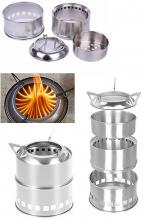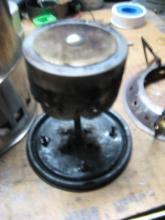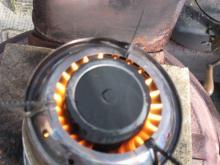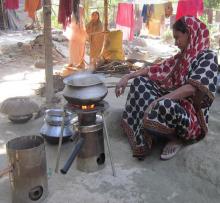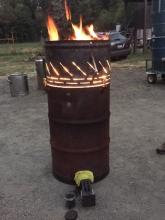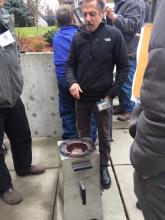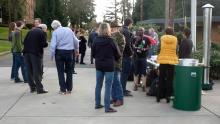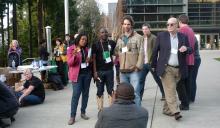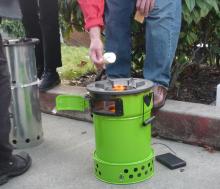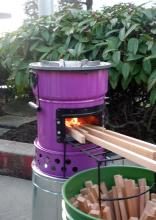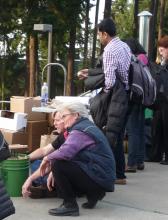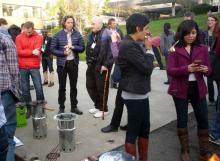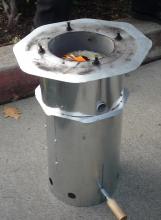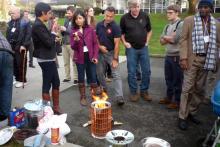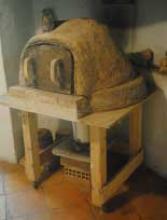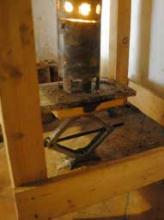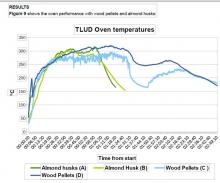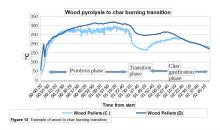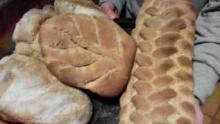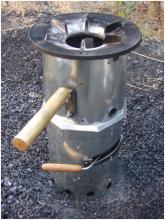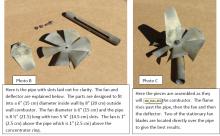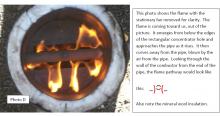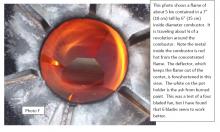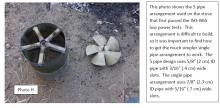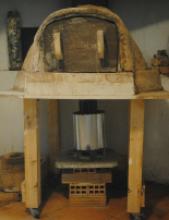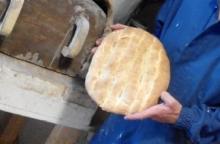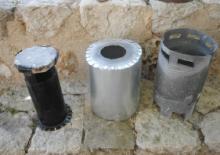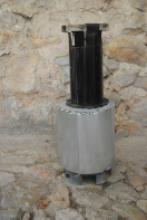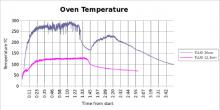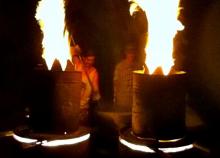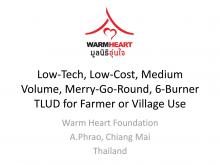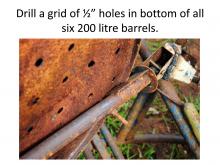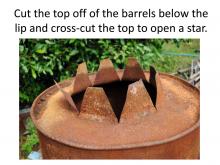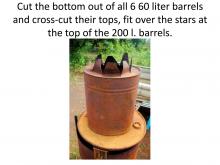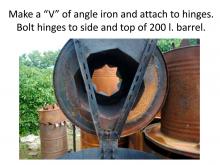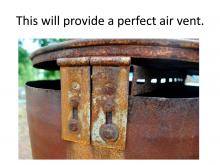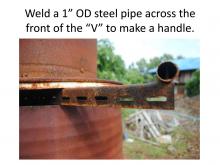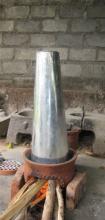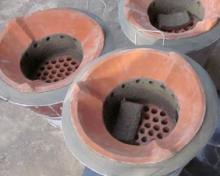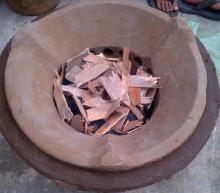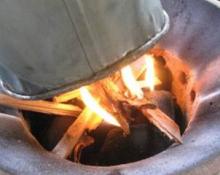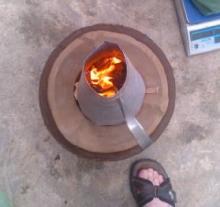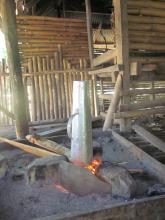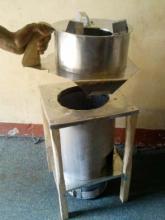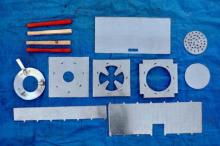Modifying a Retail Chinese TLUD Camp Stove for Improved Efficiency
The problem with the stove is that the primary air grate has large diamond shaped cuts for air. This allows the stove to burn excessively, producing a large flame exiting the stove top. The large flames envelope the pot bottom and sides producing heavy deposits of soot on the cooking utensil.
My idea was to modify the stove by reducing the primary air and attempt to force the flames back into the burner by using a stainless steel cylinder in the center of the stove opening to restrict the exiting air flow, and at the same time introducing air into the stove top by punching holes in the angled concentrator ring/pot support.
To restrict the primary air flow, a paint can lid was placed upside down inside the stove bottom. A threaded bolt was run through the center of the lid, and four small holes were punched for primary air. A stainless steel cylinder was affixed to the top of the threaded bolt. Cylinder height adjustments can be performed by loosening the jam nuts, repositioning, and re securing.
No fan is used.
The assembly is placed inside the stove, and wood pellets are poured onto the paint can lid. (About 1” deep). After the pellets are ignited, it takes around 5 minutes for the stove to gasify. After gasification, you can see the flames are being pushed down into the stove.

